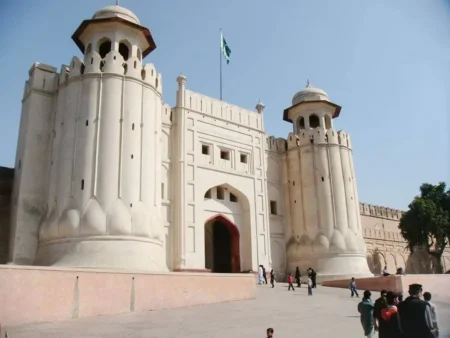BY CH. FAISAL MAHMOOD
As per a recent single bench Sindh High Court judgment, Karachi`s Mohatta Palace will be converted into a medical and dental college to honor the wishes of Ms. Fatima Jinnah.

The decision of the single bench honorable court has been very wisely challenged by the Sindh government and the single bench’s verdict has been taken to a two-member bench of Sindh High court.

The disappointing verdict of the honorable court has caused enormous anxiety in the ranks of tourism, heritage organizations, civil society, and senior architects. They all, with one voice and one object oppose the conversion of the palace into a college. The complex has been revived and converted into a museum and art gallery which is a good tourism attraction also. Mohatta Palace has already passed through several stages of conservation and management to be able to perform its present functions. It is a building of extraordinary architectural and historical importance.
The Palace was designed by the famous architect Ahmed Hussain Agha for Rai Bahadur Seth Shiv Rattan Mohatta in the late 1920s. After the partition, the government of Pakistan accommodated the office of the foreign affairs ministry there. Later the property was allotted to Fatima Jinnah in 1964.
Ms. Jinnah till her death in 1967 lived in Mohatta. In the 1970s, Shirin Bai, her sister, came to live in the building. Upon her death in 1980, the building complex was sealed.
In 1995 Sindh government took over the Palace and it was renovated under the supervision of renowned architect Habib Fida Ali and turned into a museum. It is now managed by a trust comprising public-spirited citizens with the Sindh governor as its chair.
Mohatta Palace possesses some unique architectural characteristics. The complex exists on a 2.47-acre plot. Its actual built-up area is about 1,718 square meters) in two levels. The site has seen additions and demolitions. Originally, the palace was laid out with a Chahar bagh (quadrilateral garden) between two outhouses. However, during the renovation exercise, some additions were knocked down.
According to the various documentation reports that were prepared during the pre-renovation phase, the external walls are of fine ashlar masonry done in Gizri stone.
The red decorative features comprise Jodhpur stone. The entrance steps are of white marble while the floor shows off fine mosaic work. The barsati (covered rooftop spaces) and the corner pavilions have concrete domes.
In the pre-renovation phase, there was wild growth all around the structures. This botanical menace not only affected the wall and facings but also the steps and projections. Stucco plastering varied patterns were applied abundantly in the interior spaces, much of which was discolored due to long neglect. Colored glass was also used in different patterns in the openings. The woodwork was done in fine quality teak. The result is a subtle Indo-Saracenic architectural style.
Mohatta Palace had been a forgotten space. In the early 1990s, the Heritage Foundation, a Karachi-based non-governmental body, decided on a campaign to revive it. A support group of notable citizens and professionals was formed under the patronage of Kamal Azfar, then Sindh governor, to revitalize and restore the premises. A group of architects and students led by the late Prof Kausar Bashir Ahmad from Dawood Engineering College (now university) prepared the basic documentation needed to start the restoration exercise. Later, the work was supervised in a commendable manner by Habib Fida Ali.
The site has now been converted into a museum with a full-time curator. Whereas the relevant government departments lent a helping hand, sizable contributions were made by multinational firms as part of their corporate social responsibility goal. The efforts of the organizing committee helped mobilize funds and human resources. Mohatta`slush and well-manicured lawns have been used for several open-air cultural events. The turnaround of a once desolate palace has been a success story thanks to public-spirited citizens.
With the name of Ms. Jinnah, there are Two universities already exist in Punjab and the government, whether federal or provincial can make 20 more with the same name but if masterpiece heritage and mega tourism magnet, Mohatta Palace is converted into a dental college or university, it would be a huge cultural and heritage loss to the city of Karachi as in last 60 years Mohatta Palace has established itself as one of the best cultural and tourist places in the City.



